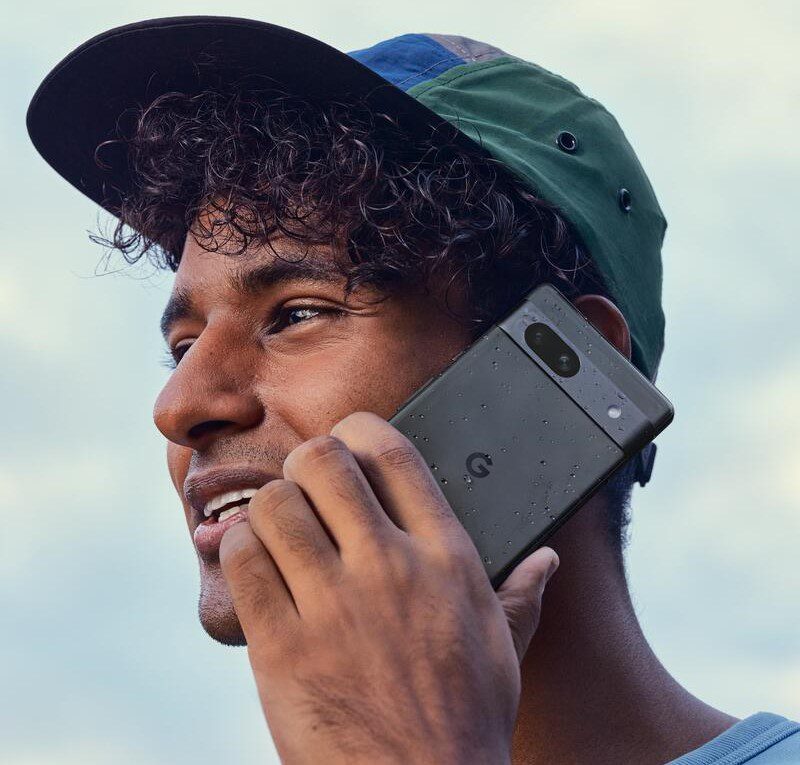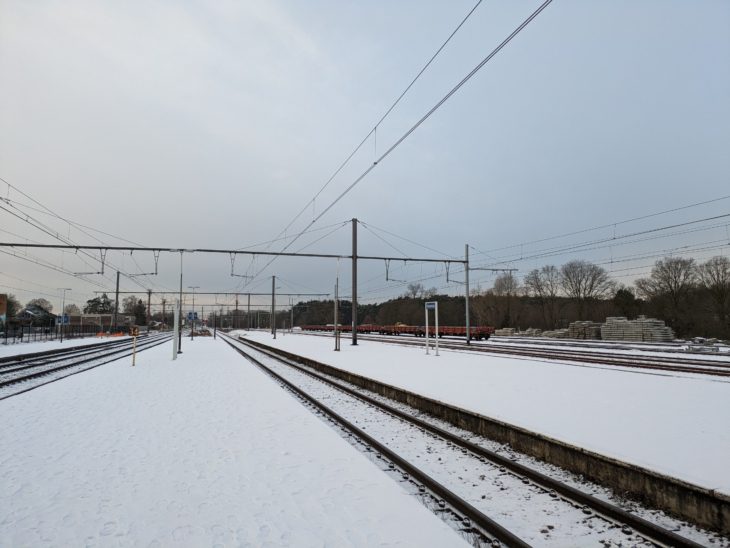Google Pixel 7a review: Small in size, big in performance
- January 18, 2024
- 0
The Google Pixel 7a is an excellent mid-range smartphone; perhaps the best in its category. You have to forgive a mistake. Although Google launched its Pixel 7a in
The Google Pixel 7a is an excellent mid-range smartphone; perhaps the best in its category. You have to forgive a mistake. Although Google launched its Pixel 7a in

The Google Pixel 7a is an excellent mid-range smartphone; perhaps the best in its category. You have to forgive a mistake.
Although Google launched its Pixel 7a in May 2023, it can still be described as a new device on the Belgian smartphone market. Google “officially” brought its Pixel series to our country only in October last year. In order to immediately hit the market with a complete offering, Google has launched not only the Pixel 8 and Pixel 8 Pro, but also the Pixel 7a in Belgium.
It’s not without reason that Belgian pixel enthusiasts have been looking for loopholes to get one for years. Google has only been making phones since 2016, but it has already made a name for itself as a hardware manufacturer. The advantage of choosing a Pixel is that you get a smartphone that is fully optimized for the Android ecosystem. The Pixel 7a also has rock-solid hardware.
Google tries to maintain a consistent line in its smartphone designs and takes this very literally with the Pixel 7a. It’s almost an exact copy of the premium Pixel 7, albeit in a smaller 6.1-inch body. Due to its compact size, the Pixel 7a fits comfortably in any hand.
The back is made of plastic and not glass as we often see on mid-range devices. Plastic looks and feels cheaper, but you don’t get the “mirror effect” of glass backs. So everything has its advantages and disadvantages. We noticed that the back is quite sensitive to fingerprints.
Google manages to fit 1,080 x 2,400 pixels on the small screen, which is more than enough to give you a crisp image. The device is equipped with an OLED screen: the better choice for displaying colors and black levels compared to LCD. There are some things in which the screen is less convincing. The maximum brightness in our tests was 471 cd/m22 a lower maximum value than many other devices in the same price range. Don’t let this number blind you too much, we have never encountered a situation where the screen was unreadable.
The refresh rate is limited to 90 Hz. This is a step up from the Pixel 6a, which was limited to 60Hz, but 120Hz is gradually becoming the norm for budget devices. Here too, we recommend putting the numbers in perspective. You don’t need the maximum refresh rate that often – think about your battery – and the image also scrolls smoothly at 90 Hz.
Google focuses heavily on photography with its Pixel smartphone and is also extending this line to the cheaper models. The Pixel 7a has two cameras: a 50 MP main sensor and a wide-angle lens with a 13 MP sensor. The main camera is extremely powerful. Google has increased the size of the sensor by 27 percent to let in more light and thus enable natural photos. There’s little difference between photos taken with the more expensive Pixel 8, which is a huge compliment to the 7a. But the wide-angle camera also performs well: colors and lighting do not differ from the main camera.
Even when it gets dark, the images remain sharp when night mode is activated. You are somewhat limited when it comes to zooming without a special lens, but the algorithms are still able to largely compensate for this artificially so that you don’t get images that are too blurry. We loved the Pixel 7a’s cameras and we can say without a doubt that you won’t find anything better in this price range.







Good cameras are a bonus, but first and foremost you want a powerful smartphone. Two years ago, Google decided to switch to home-made processors following Apple’s example. The processor in the Pixel 7a is the Tensor G2. The same chip is also in the flagship models. So you have to make little or no compensation for computing power if you buy a Pixel 7a instead of a Pixel 7.
This means that the Pixel 7a competes in a different weight class than its direct price competitors. No device between 350 and 500 euros that we bring onto the market comes even close to the CPU performance: the OnePlus Nord 3 can just keep up with the Pixel 7a. For Samsung, the decision to use a home-made CPU instead of one from Qualcomm or MediaTek is controversial, but for the Google Pixel 7a it was clearly the right choice. No problems can be found with the Pixel 7a.

Google doesn’t make its own GPUs yet. Google turned to MediaTek for this. Google seems to have chosen the right GPU from the range, as the Mali-G710 can deliver strong graphics performance that once again puts many competitors in the shade. The graphic arm wrestling is won by the OnePlus Nord 3, which manages to get a few more things out of the GPU.

There’s no room for a robust 5,000 mAh battery in the Pixel 7a’s compact packaging. You have to make do with a smaller 4,385 mAh battery. On paper, you’d expect this to have an impact on battery life, but it’s not that bad. The Pixel 7a is one of the better in its class in both the video and performance tests. Devices with larger batteries break more quickly, with the exception of the Sony Xperia 10 V.

It proves that capacity is once again nothing more than a number. How efficiently the processor uses the battery has a much greater influence. Here too, the lower maximum refresh rate of 90 Hz can be an advantage for Google.
Only good points for the Pixel 7a so far. Every smartphone has its weak point and this device is used to charge it. The specifications indicate a charging power of 18W and we sigh before we have to connect the device. Calculate enough time to refuel this device: from zero to fifty percent you need 44 minutes, from eighty percent you need 74(!) minutes.
Such loading times are really a scandal these days. In the time it takes you to charge the Pixel 7a once, you can charge the OnePlus and Xiaomi devices three times. Fast charging is by no means an exclusive feature for premium smartphones; cheap devices also support it in large numbers. Google can really do better here.

There is one extenuating circumstance that makes us forgive Google for now. The Pixel 7a supports wireless charging, one of the few in its price range. This doesn’t happen at high speeds (7.5W), but it’s a nice extra.
Google is a phone manufacturer, but is primarily the company behind the Android operating system. The version of Android you get on Pixel smartphones is the version intended by Google. Of course, you have to integrate the Google applications, otherwise you will be spared apps and software that a manufacturer can install via them. In addition, the hardware and software in this smartphone are completely coordinated.
In addition, you can rely on first-class support. Pixel smartphones are always first in line when a new Android version comes onto the market: Android 14 has been installed on the Pixel 7a since October. New Android features always come to your phone first. You can also expect three major software updates and five years of support.
There are more than enough arguments to declare the Pixel 7a the winner of the mid-range. Due to its powerful processor and impressive cameras, this device can even be described as a compact flagship with some caution. The only unfortunate downside is slow loading. If Google manages to eliminate this, the Pixel a series will no longer have any competition in the mid-range.
Now might be a good time to get the Pixel 7a. The price has temporarily fallen to 399 euros (including VAT); The device normally costs 509 euros.
This test report is part of our comparative mass test of mid-range cell phones between 350 and 500 euros. Click here for the other reviews.
The Google Pixel 7a is available in four colors: black, white, light blue and coral pink. The basic version gets 8 GB of RAM with 128 GB of storage and costs 509 euros including VAT.
Android Update Policy: Google guarantees that the Pixel 7a will receive at least three years of security updates and three years of operating system updates. This period begins with the market launch of Android 13 on May 10, 2023. The statutory warranty period is two years.
Source: IT Daily
As an experienced journalist and author, Mary has been reporting on the latest news and trends for over 5 years. With a passion for uncovering the stories behind the headlines, Mary has earned a reputation as a trusted voice in the world of journalism. Her writing style is insightful, engaging and thought-provoking, as she takes a deep dive into the most pressing issues of our time.